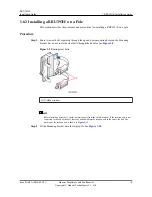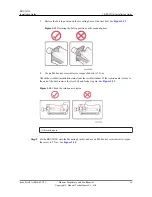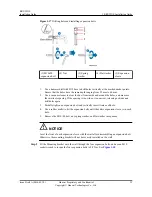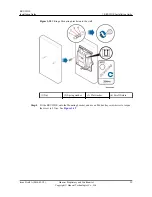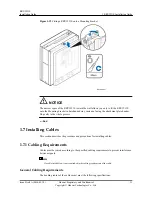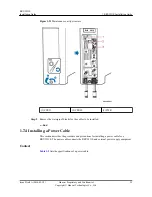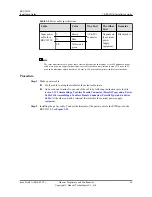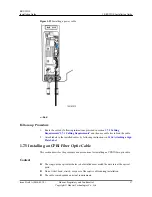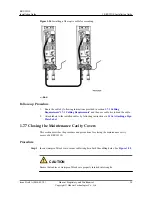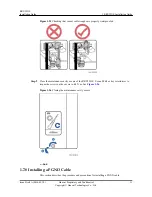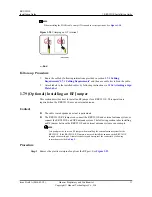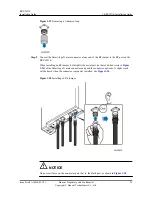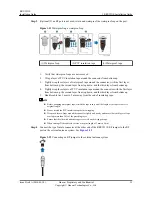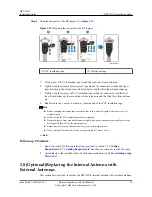
l
The bending radius of a 7/8'' feeder must be greater than 250 mm, and the bending radius
of a 5/4'' feeder must be greater than 380 mm.
l
The bending radius of a 1/4'' jumper must be greater than 35 mm. The bending radius of
a super-flexible 1/2'' jumper must be greater than 50 mm, and the bending radius of an
ordinary 1/2'' jumper must be greater than 127 mm.
l
The bending radius of a power cable or PGND cable must be at least five times its
diameter.
l
The bending radius of a fiber optic cable must be at least 20 times its diameter.
l
The bending radius of a signal cable must be at least five times its diameter.
The cables must be bound as follows:
l
Cables must be bound tightly and neatly. The sheaths of cables must not be damaged.
l
Cable ties must face the same direction, and those at the same horizontal line must be in
a straight line. The excess of cable ties must be cut off.
l
Labels or nameplates must be attached to the cables after they are installed.
The cables must be routed as follows:
l
Cables of different types must be routed separately in an untangled and orderly fashion.
l
Cables of different types must be parallel to each other or separated by using dedicated
separators.
l
Cables must be routed away from sharp objects or wall burrs. If these positions are
inevitable, cables must be protected with protection pipes.
l
Cables must be routed away from heat sources, or heat-insulation materials must be
added between cables and heat sources.
l
Sufficient slack must be provided in cables at turns or the position close to a device,
facilitating cable and device maintenance. The recommended slack is 0.1 m.
l
AC power cables and PGND cables must be tubed when routed.
l
Drip loops must be reserved for cable layout at connection points and thru-wall points
indoors/outdoors.
l
All cables cannot be routed overhead. Cables laid out outdoors should be buried in the
ground.
Special Cabling Requirements
Power cables must be routed as follows:
l
Multiple power cables must be bound when routed.
l
Power cables must be installed in the positions specified in engineering design
documents.
l
If the length of power cables is insufficient, the power cables must be replaced instead of
adding connectors or soldering joints to lengthen the cables.
l
Cabling activities require strict organization and coordination, and are allowed only
when qualified personnel and communication facilities are available.
l
Cables must be routed in an untangled and orderly fashion.
l
AC power cables must be tubed when routed.
PGND cables must be routed as follows:
RRU3931E
Installation Guide
1 RRU3931E Installation Guide
Issue Draft A (2016-03-30)
Huawei Proprietary and Confidential
Copyright © Huawei Technologies Co., Ltd.
22







